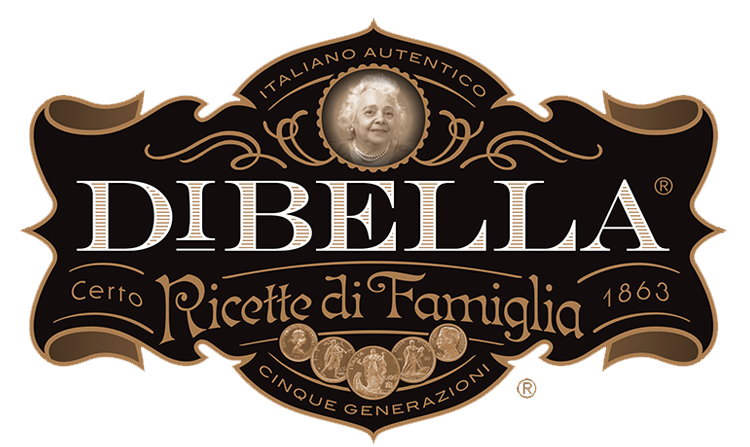Uncategorized
How Casino CEOs See the Future of Self-Exclusion Tools and Player Protection
Hold on… the gambling industry isn’t just about flashy slots and big jackpots anymore. These days, it’s also a battleground for player safety, especially when it comes to self-exclusion tools. From my experience chatting with insiders and observing market trends, casino CEOs are gradually shifting gears, recognizing that responsible gambling isn’t a marketing gimmick but a foundation for sustainability—particularly in regulated and grey markets like Australia’s.
Why does this matter? Because a self-exclusion tool is often the last line of defense for a player who’s struggling to control their gambling habits. But what does that tool actually look like behind the scenes, and how effective is it really? Let’s dive into the practical side of casino self-exclusion, how top operators are evolving their approaches, and what it means for players navigating the complex world of online gambling.

Understanding Self-Exclusion: Beyond the Checkbox
Wow! At first glance, self-exclusion might seem like just toggling a button in your account settings, but that’s only part of the story.
In reality, self-exclusion programs vary widely between operators and jurisdictions. Some casinos offer multiple layers—temporary breaks (cooling-off), longer-term blocks, and even permanent bans. The complexity grows when these are integrated with broader responsible gambling (RG) suites, including deposit limits, session reminders, and reality checks.
Australian players should note that while domestic legislation doesn’t mandate all offshore casinos to provide extensive RG features, reputable operators usually follow international best practices, partly due to licensing conditions. For instance, casinos licensed under Curaçao’s new LOK framework, like Richard Casino, are stepping up their RG offerings to meet evolving player expectations and regulatory pressure.
Still, the challenge lies in the execution: a self-exclusion tool is only as good as its enforcement and the player’s willingness to use it. We often overlook the psychological barriers—players tend to delay self-exclusion until they’re deep in trouble, which limits the tool’s preventative potential.
From a CEO’s perspective, implementing effective self-exclusion is a balancing act between safeguarding players and maintaining business continuity, especially in competitive markets.
Casino Self-Exclusion Tools: Options and Operational Realities
Alright, check this out—there are generally three main types of self-exclusion tools offered by online casinos:
- Temporary Self-Exclusion (Cooling-Off): Blocks account access for a fixed short period (e.g., 24 hours to 30 days).
- Long-Term Self-Exclusion: Blocks access for months or years, often including permanent bans.
- Multi-Site Self-Exclusion: Coordinated exclusion across multiple casinos under the same operator or jurisdiction.
Each option presents different operational and psychological challenges. For example, temporary cooling-off periods are easy to implement but may not be effective for players with severe issues. On the other hand, multi-site self-exclusion requires data sharing agreements and technical integration, which not all operators can or want to support.
Let’s compare common self-exclusion implementations in a clear table:
| Tool Type | Typical Duration | Scope | Enforcement Complexity | Player Impact |
|---|---|---|---|---|
| Temporary Cooling-Off | 24 hours to 30 days | Single account | Low | Short break, easy to reverse |
| Long-Term Self-Exclusion | Months to years or permanent | Single account | Moderate | Prevents impulsive gambling, harder to reverse |
| Multi-Site Self-Exclusion | Varies (often long-term) | Multiple casinos (same operator/jurisdiction) | High | Comprehensive barrier, requires commitment |
Something’s off… many players don’t realise that multi-site exclusion is rare, especially with offshore brands. For example, though the Australian government supports the national self-exclusion scheme (e.g., BetStop), most offshore operators, including those licensed in Curaçao, do not integrate with it.
A Practical Case: Self-Exclusion at Richard Casino
From my conversations with industry insiders, operators like Richard Casino are embracing enhanced self-exclusion tools as part of their compliance under the Curaçao Gaming Control Board’s updated LOK licensing framework.
Their platform offers flexible exclusion periods, which can be initiated directly in the player’s account dashboard. What’s interesting is that these tools are coupled with other responsible gambling features such as deposit limits, loss caps, and session time monitoring—all designed to give players multiple ways to manage risk.
For example, if an Australian player feels overwhelmed, they can set a cooling-off period for a week, during which deposits and gameplay are blocked. If the urge persists, a long-term exclusion is also available but requires contacting support to confirm, ensuring players don’t accidentally self-ban themselves.
These layered options help strike a balance. They reduce impulsivity while respecting player autonomy, which aligns with modern behavioral science findings on addiction management.
richardcasino provides clear guidelines and visible access to these features, which is crucial. Transparency in how self-exclusion works, what it impacts, and how to reverse it (if possible) builds trust and promotes responsible play.
Common Mistakes in Self-Exclusion Implementation and How to Avoid Them
- Hidden or hard-to-find tools: Players often give up if self-exclusion options are buried in terms or hard to activate. Solution: place tools prominently in the user interface.
- Lack of multi-channel support: Some casinos only allow exclusion via web, ignoring mobile or app users. Solution: provide consistent self-exclusion access across all platforms.
- Insufficient verification: If identity verification is weak, excluded players might create new accounts. Solution: enforce strict KYC and monitor suspicious activity.
- No post-exclusion support: Players need guidance and resources during and after exclusion periods. Solution: integrate links to counseling services and offer follow-up communications.
Quick Checklist for Players Considering Self-Exclusion
- ✔ Identify your triggers and set appropriate exclusion length upfront.
- ✔ Familiarise yourself with the casino’s RG tools before playing.
- ✔ Complete KYC verification early to avoid delays if you decide to self-exclude.
- ✔ Use deposit and loss limits in conjunction with exclusion tools for better control.
- ✔ Seek professional help through recommended support organisations if gambling becomes problematic.
Mini-FAQ on Casino Self-Exclusion Tools
Can I reverse my self-exclusion before it expires?
Usually no, especially for long-term exclusions. Temporary cooling-off periods may sometimes be shortened by contacting support, but casinos typically require the full duration to protect player welfare. This policy discourages impulsive reversals.
Are self-exclusion tools effective in preventing problem gambling?
They are a critical part of a broader responsible gambling strategy but not a standalone solution. Their success depends on player commitment and complementary measures like counseling and financial management.
Do all casinos offer the same self-exclusion options?
No. Features vary by operator and jurisdiction. Australian-licensed platforms may integrate with national schemes, while many offshore casinos offer their proprietary tools. Always check the casino’s responsible gambling page.
How does self-exclusion affect bonuses or winnings?
Generally, self-exclusion does not affect existing bonuses or winnings directly. However, some casinos may restrict bonus access after exclusion or require clearing wagering requirements before withdrawal.
Is my data safe when I use self-exclusion?
Reputable casinos encrypt and protect personal data following KYC and AML regulations. Sensitive details related to self-exclusion are handled confidentially and used solely to enforce the exclusion period.
What the Future Holds: CEO Perspectives and Industry Trends
Here’s the thing. The outlook for self-exclusion tools is promising but layered with challenges. CEOs stress the need for smarter technology—AI-driven monitoring to flag risky behaviour, integrating data across platforms, and seamless communication between operators and regulators.
They also see self-exclusion evolving into a more holistic concept, embedded into a player’s entire gambling journey, not just a reactive instrument. For example, predictive analytics could prompt voluntary breaks before losses mount dangerously, turning RG from reactive to proactive.
However, regulatory complexity remains a hurdle, especially for international operators serving Australian players. Laws differ dramatically, and the lack of a unified national offshore player protection scheme means operators must innovate independently.
That’s where casinos like richardcasino stand out by offering sophisticated self-exclusion alongside comprehensive RG tools, aligned with the new Curaçao LOK license requirements. Their approach reflects a growing industry consensus: player protection is not optional but essential for long-term survival.
Common Pitfalls in Self-Exclusion Strategy Implementation
- Assuming self-exclusion alone solves problem gambling without player education or support.
- Neglecting multi-device access, leading to workaround attempts by players.
- Lack of integration between deposit limits and exclusion periods, reducing effectiveness.
- Underestimating cultural and behavioural factors unique to markets like Australia.
Summary: Key Points for Australian Players
- Self-exclusion tools vary widely; choose casinos with transparent and flexible options.
- Early KYC verification speeds up exclusion and withdrawal processes.
- Use self-exclusion in combination with deposit and loss limits for best control.
- Look for casinos aligned with reputable licensing, like those under Curaçao’s updated LOK framework.
- Access to professional support services is crucial alongside self-exclusion.
18+ Play responsibly. If gambling is causing harm, seek help from organizations such as Gambling Help Online (1800 858 858) or Gambler’s Help Victoria (1800 858 858). Casinos require identity verification (KYC) to comply with AML regulations. Always set budgets and limits before playing.
Sources
- https://curacao-egaming.com
- https://www.gamblinghelponline.org.au
- https://www.gamblingcommission.gov.uk
- https://casino.guru/casino/richard-casino/reviews
About the Author
Ivan Petrov, iGaming expert with over 10 years of experience in online casino operations and player protection strategies. Ivan specialises in translating complex regulatory and technical concepts into practical advice for Australian players navigating offshore gambling platforms.
